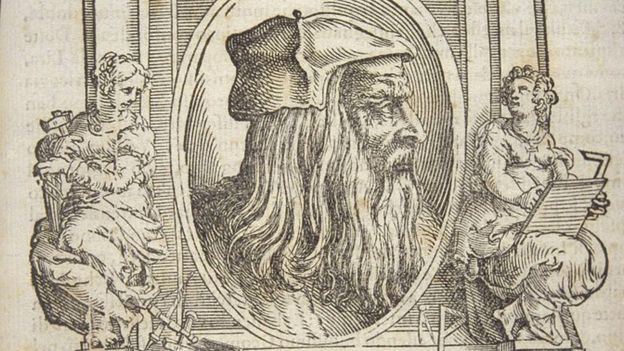A painting of the Mona Lisa hangs above a fireplace in a London flat in the 1960s. Is this picture not only by Leonardo da Vinci, but also an earlier version of the world famous portrait that hangs in the Louvre Museum in Paris?
Some people are convinced it is, and more than 50 years later, a bitter battle has erupted over both the ownership of the picture and the evidence about who painted it.
The so-called “Earlier Mona Lisa” is at the heart of a mystery that involves Caribbean tax havens, Swiss bank vaults, a mysterious international consortium, and the Sherlock Holmes of the art world.
So is it genuine? Who are the rightful owners? And could the portrait at the centre of this Da Vinci Code-style mystery be worth hundreds of millions of dollars?
A court case in Italy this week may finally help shed some light on the answers to these questions.
In 2012, an organisation called the Mona Lisa Foundation unveiled to the world, in a blaze of publicity, what it claimed to be a second painting of the Mona Lisa by Leonardo da Vinci.
Since the Mona Lisa is possibly the world’s most famous painting, and its painter is regarded as one of history’s greatest artists, such a find would turn the art world upside down.
The foundation set out an array of evidence to try to back up the claim that the painting was a second, previously unknown version of the portrait. But curiously the organisation claims it doesn’t own the painting.
It says the picture is owned by an unnamed international consortium. When asked about this, the foundation’s general secretary, Joël Feldman, replies: “The foundation, as a matter of policy and in compliance with its obligations, does not comment on the ownership consortium.”
But at their home in south London, Andrew and Karen Gilbert have a different story – they say they own a 25% share in the portrait.
When they contacted the Mona Lisa Foundation after it unveiled the portrait in 2012 they claimed the organisation said it “didn’t know anything about us, they weren’t the owners and just tried to bat us away as someone inconvenient”.
“Because we were unable to find out who the owner was, nobody was telling us anything, we didn’t know how we could launch any kind of proceedings,” Karen says.
This week has seen a dramatic development that the Gilberts believe may lead to a breakthrough in their claim.
But a claim in what? Is it possible for a near priceless Leonard da Vinci portrait to suddenly come to light?
Incredibly, that’s exactly what happened with a painting called the Salvator Mundi – or Saviour of the World.
Sold for just £45 ($55) in 1958, it was bought at auction for an incredible $450m (£357m) by an anonymous buyer two years ago.
The difference, of course, was down to the painting being authenticated by an international team of experts as a genuine Leonardo.
Could the painting dubbed the Earlier Mona Lisa by the foundation follow the same path?
‘Had to be a Leonardo’
“I was sceptical but intrigued,” Professor Jean-Pierre Isbouts says from Santa Monica, California – he was flown to Switzerland by the foundation to view the painting.
“I walked into the vault, it was very cold in there, and I spent about two hours with that painting. But after five minutes I recognised that this had to be a Leonardo.”
But it wasn’t just the appearance that made the academic from Fielding Graduate University in California (whose work is recommended by the foundation) believe the portrait was genuine – it was also the historical evidence, he says.

“Gior
gio Vasari, the [16th Century] biographer of Leonardo, clearly states that Leonardo worked on the Mona Lisa for four years and then left it unfinished.”
This matches the appearance of the Earlier Mona Lisa, which has an incomplete background, unlike the famous portrait that hangs in the Louvre.
Professor Isbouts also points out that historical records mention Leonardo painting the Mona Lisa for two different clients, raising the possibility that he completed two separate portraits, one for each commission.
He adds that scientific tests appear to back up the claim the painting is genuine.
“With the Earlier Mona Lisa the science told us a) it is from the early 16th Century, b) it is definitely a composition by Leonardo because the configuration and the composition is identical to that of the Louvre Mona Lisa. And c) the histograms [digital graphs of the colours used] show that in
terms of the ‘handwriting’ of the painting, how he applies the paint, [it] is exactly identical.”
But not everyone agrees.
“It’s not the real article for a whole series of reasons,” Martin Kemp, emeritus professor of art history at the University of Oxford, says.
“It really isn’t a serious runner to be by Leonardo himself.”
He thinks the reason Giorgio Vasari believed the Mona Lisa to be incomplete was because “Vasari’s information was all Florentine”, and the picture was probably completed after Leonardo had left the city of Florence.



